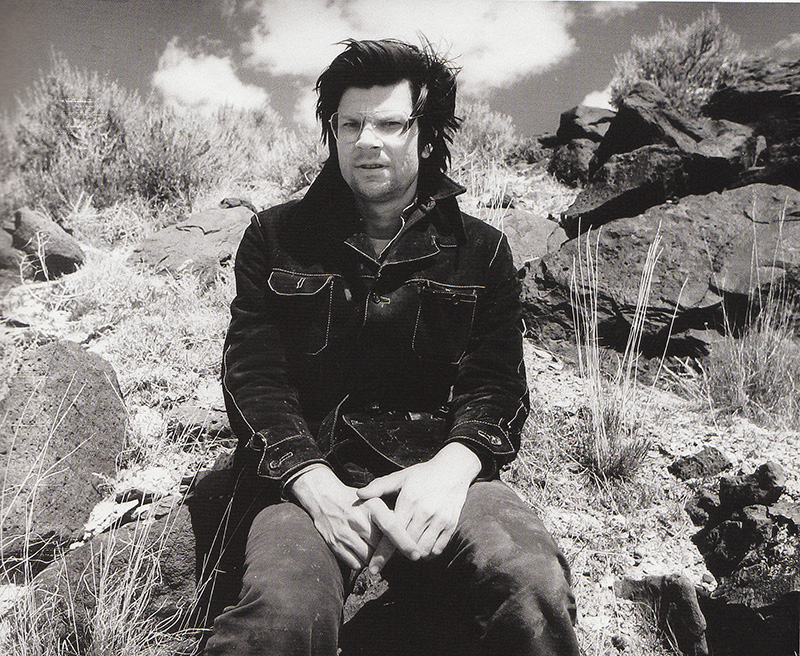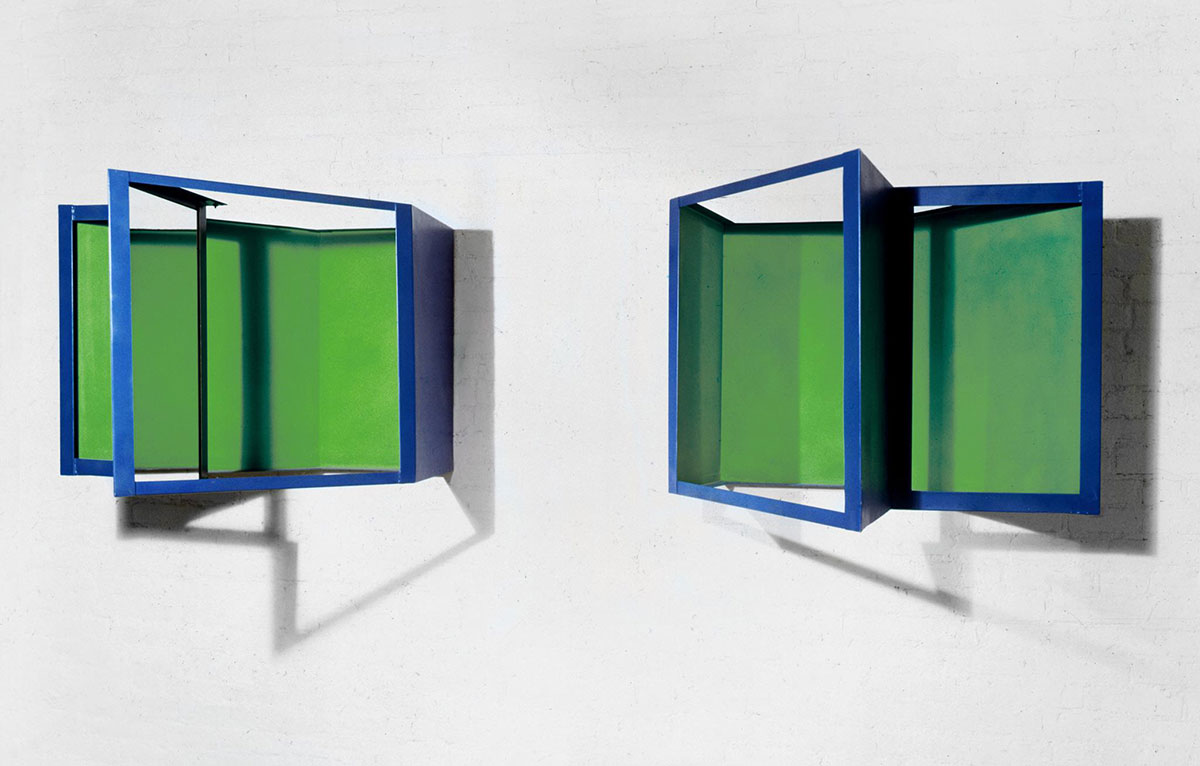TRACES: Robert Smithson
 Today is the occasion to bear in mind Robert Smithson (2/1/1938-20/7/1973), one of the most influential artists of the 20th Century. Smithson was a seminal figure in the art form that became known as Earthworks or Land Art. He radically redefined notions of sculpture through his writings and projects. This column is a tribute to very important artists, living or dead, who have left their trace in Contemporary Art. Through documents or interviews, starting with: moments and memories we reveal out from the past-unknown sides of big personalities, who left their indelible traces in time and history…
Today is the occasion to bear in mind Robert Smithson (2/1/1938-20/7/1973), one of the most influential artists of the 20th Century. Smithson was a seminal figure in the art form that became known as Earthworks or Land Art. He radically redefined notions of sculpture through his writings and projects. This column is a tribute to very important artists, living or dead, who have left their trace in Contemporary Art. Through documents or interviews, starting with: moments and memories we reveal out from the past-unknown sides of big personalities, who left their indelible traces in time and history…
By Efi Michalarou
 While still in high school in Clifton, New Jersey, Robert Smithson attended classes in New York at the Art Students League and the Brooklyn Museum School. He served in the United States Army Reserves in 1956–57, after which he moved to New York. In the late ‘50s, he was painting, drawing, and making collages. Smithson’s first solo show was held at Artists Gallery in New York in 1959. Smithson married Nancy Holt in 1963. Taking up sculpture in 1964, he produced Minimalist and geometric works. Visits to quarries, industrial sites, and abandoned wastelands in New Jersey and neighboring states began to impact his art in 1966. The places he explored soon expanded to include the American West and Southwest, deserts in particular. Among those accompanying him on various trips were: Nancy Holt, Carl Andre, Michael Heizer, Donald Judd, Robert Morris and Claes Oldenburg. Smithson worked on his “Photo-Markers” and “Sites/Nonsites” in the mid- to late 1960s. The “Photo-Markers” explored human intervention into the natural landscape. He photographed sites, enlarged the images, and placed these enlargements into the physical landscapes they depicted before rephotographing these (now photo-bedecked) landscapes. The “Sites/Nonsites” series comprised sculptures incorporating elements, such as: dirt, sand, and rocks, gathered from distant venues and transported to the gallery space. Unlike the “Photo-Markers”, the “Sites/Nonsites” altered the landscape itself by the removal of materials. Smithson’s subsequent Earthworks would use similar practices on a massive scale, the artist literally reshaping the land. Smithson wrote many theoretical essays and variations on the travelogue genre. One such illustrated piece, “A Tour of the Monuments of Passaic, New Jersey”, published in a 1967 issue of Artforum, was a tongue-in-cheek guide to such highlights as a sandbox and industrial piping. In 1968, photographer Bernd Becher accompanied Smithson through West Germany’s industrial Ruhr Valley. The next year, Smithson traveled with Nancy Holt and his dealer Virginia Dwan to Mexico, a trip that spawned the Yucatan Mirror Displacements (1969), the photographic essay “Incidents of Mirror-Travel in the Yucatan” (1969), and the related Performance “Hotel Palenque” (1972). In addition, Smithson visited Stonehenge and other prehistoric sites of England and Wales in 1969. Early Earthworks, such as “Asphalt Rundown” (1969) and “Glue Pour” (1969), were inspired in part by his interest in entropy and abstraction, since the dumped and cooled materials created hardened abstract forms that resulted from their loss of heat. They were also demonstrations of Smithson’s growing fascination with industrial areas and human neglect of wastelands. Meanwhile, his proposed large-scale project for an island in British Columbia was terminated as a result of environmental concerns. Smithson’s best-known work, “Spiral Jetty”, was created in 1970 in the violet-red water off the northern shore of Utah’s Great Salt Lake. This gigantic spiral of some 6,650 tons of earth would at times be entirely underwater in subsequent years. After a great deal of hunting, Smithson purchased a Maine island and a site in Utah for future projects. In 1971, he completed “Broken Circle/Spiral Hill” at a quarry near Emmen, the Netherlands. Interested in “reclaiming” American land for large-scale art, Smithson presented more than fifty proposals to various strip-mining companies, but was stymied in these efforts. On 20/7/73, Smithson was aboard a small airplane to document the site for a new work called “Amarillo Ramp”. The plane crashed, killing Smithson, the photographer, and the pilot. Nancy Holt and others completed “Amarillo Ramp” the next month.
While still in high school in Clifton, New Jersey, Robert Smithson attended classes in New York at the Art Students League and the Brooklyn Museum School. He served in the United States Army Reserves in 1956–57, after which he moved to New York. In the late ‘50s, he was painting, drawing, and making collages. Smithson’s first solo show was held at Artists Gallery in New York in 1959. Smithson married Nancy Holt in 1963. Taking up sculpture in 1964, he produced Minimalist and geometric works. Visits to quarries, industrial sites, and abandoned wastelands in New Jersey and neighboring states began to impact his art in 1966. The places he explored soon expanded to include the American West and Southwest, deserts in particular. Among those accompanying him on various trips were: Nancy Holt, Carl Andre, Michael Heizer, Donald Judd, Robert Morris and Claes Oldenburg. Smithson worked on his “Photo-Markers” and “Sites/Nonsites” in the mid- to late 1960s. The “Photo-Markers” explored human intervention into the natural landscape. He photographed sites, enlarged the images, and placed these enlargements into the physical landscapes they depicted before rephotographing these (now photo-bedecked) landscapes. The “Sites/Nonsites” series comprised sculptures incorporating elements, such as: dirt, sand, and rocks, gathered from distant venues and transported to the gallery space. Unlike the “Photo-Markers”, the “Sites/Nonsites” altered the landscape itself by the removal of materials. Smithson’s subsequent Earthworks would use similar practices on a massive scale, the artist literally reshaping the land. Smithson wrote many theoretical essays and variations on the travelogue genre. One such illustrated piece, “A Tour of the Monuments of Passaic, New Jersey”, published in a 1967 issue of Artforum, was a tongue-in-cheek guide to such highlights as a sandbox and industrial piping. In 1968, photographer Bernd Becher accompanied Smithson through West Germany’s industrial Ruhr Valley. The next year, Smithson traveled with Nancy Holt and his dealer Virginia Dwan to Mexico, a trip that spawned the Yucatan Mirror Displacements (1969), the photographic essay “Incidents of Mirror-Travel in the Yucatan” (1969), and the related Performance “Hotel Palenque” (1972). In addition, Smithson visited Stonehenge and other prehistoric sites of England and Wales in 1969. Early Earthworks, such as “Asphalt Rundown” (1969) and “Glue Pour” (1969), were inspired in part by his interest in entropy and abstraction, since the dumped and cooled materials created hardened abstract forms that resulted from their loss of heat. They were also demonstrations of Smithson’s growing fascination with industrial areas and human neglect of wastelands. Meanwhile, his proposed large-scale project for an island in British Columbia was terminated as a result of environmental concerns. Smithson’s best-known work, “Spiral Jetty”, was created in 1970 in the violet-red water off the northern shore of Utah’s Great Salt Lake. This gigantic spiral of some 6,650 tons of earth would at times be entirely underwater in subsequent years. After a great deal of hunting, Smithson purchased a Maine island and a site in Utah for future projects. In 1971, he completed “Broken Circle/Spiral Hill” at a quarry near Emmen, the Netherlands. Interested in “reclaiming” American land for large-scale art, Smithson presented more than fifty proposals to various strip-mining companies, but was stymied in these efforts. On 20/7/73, Smithson was aboard a small airplane to document the site for a new work called “Amarillo Ramp”. The plane crashed, killing Smithson, the photographer, and the pilot. Nancy Holt and others completed “Amarillo Ramp” the next month.













